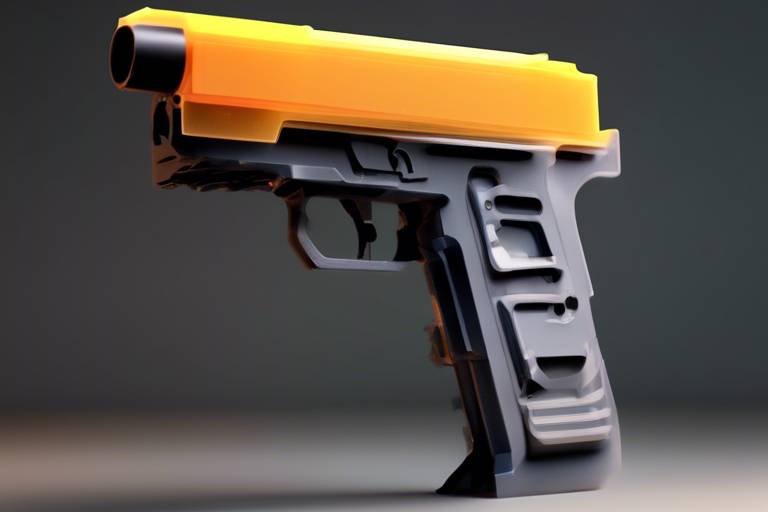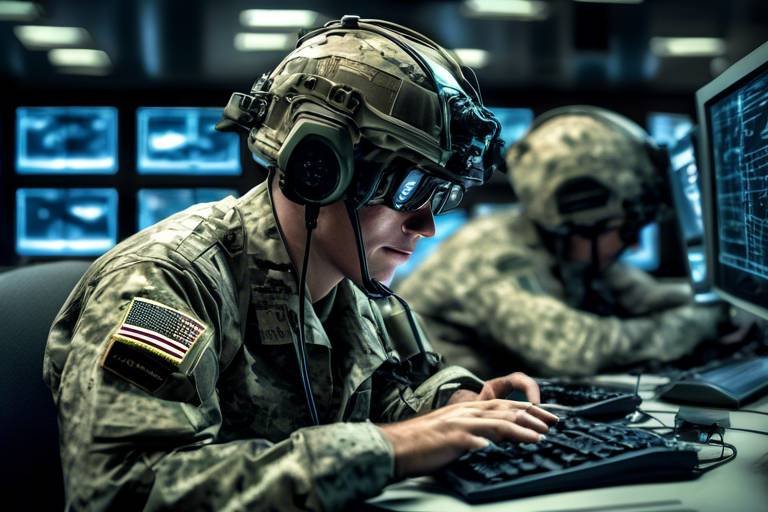Military Robotics in Humanitarian Aid - A New Frontier
In an age where technology is rapidly evolving, the intersection of military robotics and humanitarian aid is becoming a focal point of innovation. These advanced machines, once solely designed for combat, are now stepping into the realm of humanitarian efforts, showcasing their potential to save lives and assist in disaster relief. Imagine a scenario where a natural disaster strikes—earthquakes, floods, or wildfires—leaving communities in chaos. In such moments, the swift deployment of military robots can be the difference between life and death. They bring not only efficiency but also a sense of hope to those affected.
The transformation of military robotics from the battlefield to the frontline of humanitarian aid is nothing short of remarkable. These robots are equipped with cutting-edge technologies that allow them to perform tasks that are often too dangerous or challenging for human responders. Whether it’s navigating through rubble to locate survivors or delivering essential medical supplies to remote areas, military robots are proving to be indispensable tools in crisis situations.
As we delve deeper into this topic, we will explore the various applications of military robotics in disaster relief, highlighting their effectiveness in search and rescue operations, medical supply delivery, and infrastructure assessments. Moreover, we will discuss the challenges and ethical considerations surrounding their use, ensuring a comprehensive understanding of this new frontier. So, what does the future hold for military robotics in humanitarian aid? Let's embark on this exploration together.
The journey of military robotics is a fascinating tale of innovation and adaptation. Initially developed for warfare, these technologies have undergone significant transformations over the years. The early prototypes were simple machines, primarily used for surveillance and reconnaissance. However, as technology advanced, so did their capabilities. Today, we see robots that can navigate complex environments, communicate with human operators, and even make autonomous decisions.
One of the key milestones in this evolution was the introduction of unmanned aerial vehicles (UAVs), commonly known as drones. These flying robots have revolutionized military operations, providing real-time intelligence and reconnaissance. But their potential extends far beyond the battlefield. In humanitarian contexts, drones can survey disaster-stricken areas, identify hazards, and locate victims, all while keeping human responders safe from harm.
Military robots are making waves in various disaster relief scenarios. Their versatility allows them to be deployed in numerous ways, each contributing to the overall effectiveness of humanitarian efforts. For instance, in search and rescue operations, these robots can access areas that are too dangerous for humans, such as collapsed buildings or hazardous environments. Equipped with sensors and cameras, they can locate survivors and provide real-time data to rescue teams.
When disaster strikes, every second counts. Military robots excel in search and rescue operations, significantly reducing the time it takes to locate victims. For example, during the devastating earthquake in Haiti, robots played a crucial role in navigating the rubble, helping rescuers find trapped individuals. Such success stories highlight the importance of integrating military robotics into disaster response strategies.
What fuels the effectiveness of these robots? The answer lies in the technological innovations that enhance their capabilities. From artificial intelligence (AI) that allows for autonomous navigation to advanced sensors that detect human heat signatures, military robots are equipped with tools that make them invaluable in crisis situations. Drones equipped with remote sensing technology can map disaster zones, providing critical information to aid organizations.
Analyzing specific case studies reveals the profound impact of military robotics in real-world situations. For instance, during the aftermath of Hurricane Harvey, military drones were deployed to assess flood damage and identify areas needing urgent assistance. The data collected not only expedited the relief efforts but also ensured that resources were allocated efficiently. These case studies serve as powerful examples of how military robotics can transform humanitarian aid.
Another compelling application of military robotics is in the transportation of medical supplies. In emergencies, accessibility can be a major hurdle. Military robots can traverse difficult terrains, ensuring that essential medical supplies reach those in need promptly. Imagine a remote village cut off from help due to a natural disaster; a robot can navigate through debris and deliver life-saving medications, bridging the gap between need and supply.
Despite their potential, the deployment of military robotics in humanitarian aid is not without challenges. Operational limitations, such as terrain adaptability and resource availability, often hinder their effectiveness. Additionally, ethical dilemmas arise when considering the use of military technology in civilian contexts. Questions about autonomy, accountability, and the potential for misuse must be addressed to ensure responsible deployment.
Technical and logistical challenges can significantly impact the deployment of military robots in humanitarian missions. For instance, navigating rugged terrains or extreme weather conditions can limit the effectiveness of these machines. Moreover, the availability of resources, including trained personnel and maintenance support, can pose additional hurdles.
As we embrace the use of military technology in humanitarian contexts, ethical concerns must be carefully considered. Issues surrounding autonomy and accountability are paramount. Who is responsible if a robot makes a mistake? How do we ensure that these technologies are used for good and not for harm? Addressing these questions is crucial for the future integration of military robotics in humanitarian aid.
Looking ahead, the future of military robotics in humanitarian aid holds immense potential. With ongoing advancements in technology, we can expect even more sophisticated machines capable of responding to crises with unprecedented efficiency. As we continue to explore this new frontier, collaboration between military and humanitarian organizations will be essential. By combining resources and expertise, we can pave the way for a future where military robotics play a vital role in saving lives and alleviating suffering.
- What are military robots used for in humanitarian aid?
Military robots are utilized for search and rescue operations, medical supply delivery, and infrastructure assessments in disaster-stricken areas. - How do military robots enhance search and rescue operations?
They can navigate hazardous environments, locate survivors, and provide real-time data to rescue teams, significantly improving response times. - What challenges do military robots face in humanitarian efforts?
Operational limitations like terrain adaptability, resource availability, and ethical dilemmas concerning their use are significant challenges. - What is the future of military robotics in humanitarian aid?
Future advancements may lead to more sophisticated robots, enhancing their effectiveness in crisis situations and improving collaboration between military and humanitarian organizations.

The Evolution of Military Robotics
When we think about military robotics, our minds often drift to images of high-tech drones buzzing over battlefields or armored robots navigating treacherous terrains. However, the journey of military robotics has been anything but straightforward. It has evolved significantly over the decades, transitioning from rudimentary machines designed for combat to sophisticated systems that now play a crucial role in humanitarian efforts. This evolution is not just a technological advancement; it reflects a broader understanding of how these tools can serve humanity beyond the battlefield.
The origins of military robotics can be traced back to the mid-20th century, during the Cold War, when nations began experimenting with automated systems for surveillance and combat. Early robots were primarily designed for explosive ordnance disposal and reconnaissance missions. These machines were bulky, limited in capability, and often operated remotely by human controllers. However, as technology progressed, the introduction of artificial intelligence (AI) and machine learning began to reshape the landscape. Suddenly, robots could analyze data in real-time, making them more effective in dynamic environments.
Throughout the 1990s and early 2000s, the military saw significant advancements in robotics, primarily driven by the need for enhanced operational capabilities in combat zones. The development of unmanned aerial vehicles (UAVs), or drones, marked a pivotal moment in military technology. These drones not only provided surveillance capabilities but also became essential for delivering supplies and conducting search and rescue missions in hostile territories. As these technologies matured, military leaders began to recognize their potential for humanitarian applications, especially in disaster response scenarios.
Fast forward to today, and we see military robotics being deployed in a variety of humanitarian contexts. The transition from combat to aid is a testament to the versatility of robotic technology. For instance, robots that were once used to locate enemy positions are now being repurposed to find victims trapped in rubble after earthquakes or other disasters. This shift not only demonstrates the adaptability of these machines but also highlights a growing ethical responsibility among military organizations to leverage their capabilities for the greater good.
To illustrate the evolution and impact of military robotics, consider the following table that summarizes key milestones in their development:
| Year | Milestone | Application |
|---|---|---|
| 1960s | Introduction of Remote-Controlled Robots | Explosive Ordnance Disposal |
| 1990s | Development of UAVs | Surveillance and Reconnaissance |
| 2000s | Advent of AI in Robotics | Combat and Humanitarian Missions |
| 2020s | Integration of Robotics in Disaster Relief | Search and Rescue, Medical Supply Delivery |
As we look towards the future, the potential for military robotics in humanitarian aid seems limitless. The ongoing advancements in technology, paired with a commitment to ethical practices, suggest that these machines will not only continue to evolve but also redefine how we approach disaster response. The lessons learned from their military applications are invaluable, paving the way for innovative solutions that can save lives and restore communities in times of need.
- What are military robots primarily used for today? Military robots are used for a variety of purposes, including surveillance, reconnaissance, and increasingly in humanitarian aid such as search and rescue operations.
- How do military robots assist in disaster relief? They can locate victims, deliver medical supplies, and assess infrastructure damage in disaster-stricken areas.
- What technological advancements have influenced military robotics? Key advancements include artificial intelligence, machine learning, and improved sensors that enhance the capabilities of robots.
- What ethical considerations surround the use of military robots? Concerns include autonomy, accountability, and the potential for misuse in humanitarian contexts.
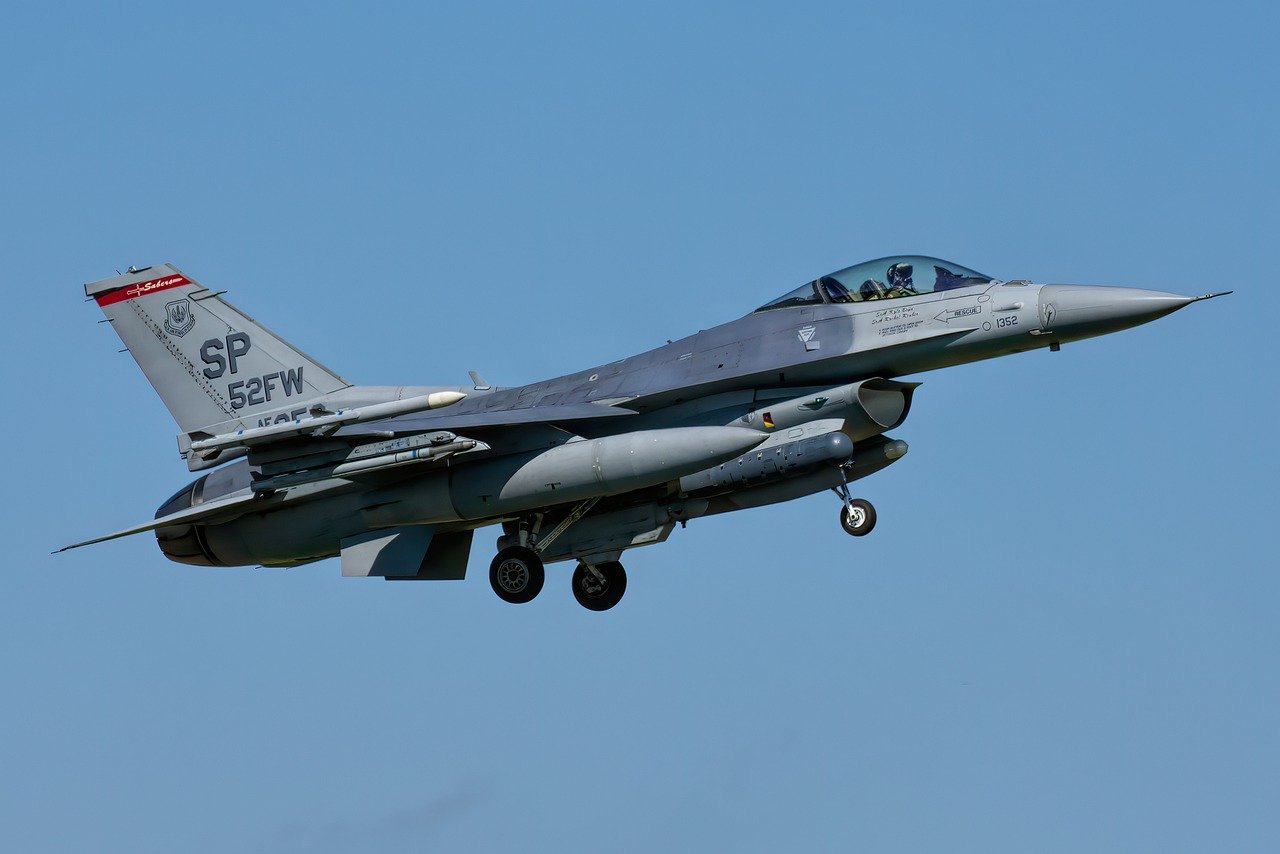
Applications in Disaster Relief
When disaster strikes, the chaos that ensues can be overwhelming. In such dire situations, military robotics have emerged as a beacon of hope, showcasing their versatility and potential to save lives. These advanced machines are not just confined to the battlefield anymore; they have transitioned into crucial tools for humanitarian aid. From search and rescue operations to delivering medical supplies, the applications of military robots in disaster relief are as diverse as they are impactful.
One of the primary roles of military robotics in disaster relief is in search and rescue operations. Imagine a collapsed building after an earthquake, with victims trapped beneath the rubble. Traditional rescue teams can face numerous challenges such as hazardous conditions and limited visibility. Here, robots equipped with advanced sensors and cameras can maneuver through tight spaces and provide real-time data to rescuers. They can detect heat signatures, enabling them to locate survivors who might otherwise go unnoticed. For instance, during the 2010 Haiti earthquake, military drones and robots played a crucial role in locating trapped individuals, showcasing the life-saving potential of these technologies.
In addition to search and rescue, military robots are also pivotal in medical supply delivery. In the aftermath of a disaster, access to medical care can be severely hindered. Roads may be blocked, and traditional transport methods can be rendered ineffective. Here, robots equipped with autonomous navigation systems can transport essential supplies such as medications, water, and food to affected areas. This capability ensures that aid reaches those in need promptly, mitigating the impact of the disaster. For example, during the COVID-19 pandemic, some military robots were repurposed to deliver medical supplies to remote locations, demonstrating their adaptability and efficiency in various emergency contexts.
Furthermore, military robots are invaluable in infrastructure assessment. After a disaster, it is critical to evaluate the safety of buildings, bridges, and roads. Robots can quickly survey these structures, using remote sensing technology to assess damage and identify potential hazards. This information is crucial for planning rescue operations and ensuring the safety of first responders. By utilizing drones and ground robots, teams can gather data that would take humans significantly longer to collect, thus speeding up the recovery process.
As we explore the various applications of military robotics in disaster relief, it's clear that these technologies not only enhance operational efficiency but also save lives. However, the integration of military robots into humanitarian efforts is not without its challenges. As we delve deeper into this topic, we will examine the obstacles and ethical considerations that accompany the use of such advanced technologies in sensitive environments.
- What types of military robots are used in disaster relief?
Military robots used in disaster relief include drones for aerial surveillance, ground robots for search and rescue, and autonomous vehicles for medical supply transport. - How do military robots improve search and rescue operations?
They can access dangerous or hard-to-reach areas, provide real-time data, and locate survivors through advanced sensors. - Are there any ethical concerns regarding the use of military robots in humanitarian aid?
Yes, ethical dilemmas include issues of autonomy, accountability, and the potential for misuse of military technologies. - Can military robots operate in challenging environments?
Many military robots are designed to adapt to various terrains and conditions, making them suitable for diverse disaster scenarios.
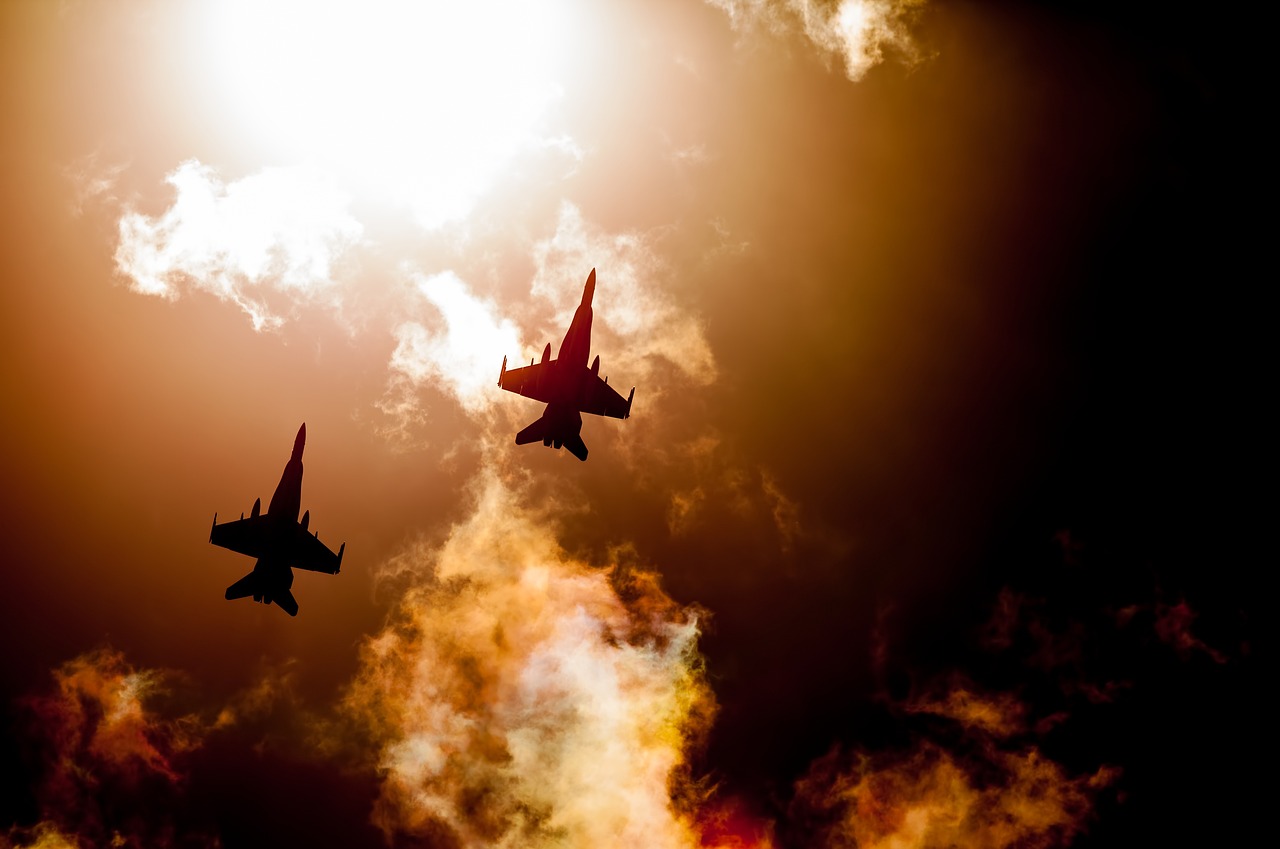
Search and Rescue Operations
In the wake of disasters, whether natural or man-made, the race against time to locate and assist victims becomes a daunting challenge. This is where military robotics step in as game-changers in search and rescue operations. Imagine a scenario where a massive earthquake has struck a densely populated city; traditional rescue teams are often overwhelmed and can only cover so much ground. Enter the robots, equipped with advanced sensors and AI-driven algorithms, capable of navigating through rubble and debris to find those trapped beneath. These machines not only save time but also enhance the safety of human rescuers by taking on the most perilous tasks.
One of the most remarkable aspects of military robots in search and rescue is their ability to operate in environments that are hazardous or inaccessible to humans. For instance, drones can fly over disaster zones to assess damage and locate survivors, while ground robots can traverse uneven terrain, providing real-time data back to rescue teams. The integration of AI technologies allows these robots to analyze vast amounts of data quickly, identifying patterns that might indicate where survivors are likely to be found.
Real-life examples of military robotics in action during search and rescue operations highlight their effectiveness. In the aftermath of the 2011 Fukushima disaster in Japan, unmanned ground vehicles were deployed to survey the damaged areas, allowing rescuers to prioritize their efforts based on the most critical needs. Similarly, during the 2010 Haiti earthquake, military drones provided aerial imagery that assisted in mapping out the most affected regions, facilitating quicker and more efficient rescue operations. These instances illustrate how technology can significantly enhance the capabilities of rescue teams, ultimately saving lives.
The advancements in robotics technology have led to the development of sophisticated systems that can be tailored for specific search and rescue missions. Innovations such as autonomous navigation, remote sensing, and real-time data transmission have revolutionized how these machines operate. For instance, some robots are now equipped with thermal imaging cameras that can detect body heat, enabling them to locate survivors even in complete darkness or under thick debris.
When examining the impact of military robotics in search and rescue, several case studies stand out. In 2018, during the devastating earthquake in Indonesia, military drones were utilized to conduct aerial surveys and provide real-time feedback to ground teams. The data collected enabled rescuers to identify areas that needed immediate attention, ultimately leading to the successful rescue of numerous individuals trapped in collapsed buildings. Such examples underscore the crucial role that military robotics play in enhancing the effectiveness of humanitarian efforts.
In conclusion, the integration of military robotics into search and rescue operations is not just a technological advancement; it represents a paradigm shift in how we approach disaster response. As these technologies continue to evolve, we can expect even greater efficiencies and capabilities, ultimately leading to more lives saved in times of crisis.
- What types of military robots are used in search and rescue operations?
Various types of robots are utilized, including drones for aerial surveys and ground robots for navigating difficult terrain.
- How do military robots enhance safety for human rescuers?
By taking on the most dangerous tasks, such as entering unstable structures, robots help protect human lives during rescue missions.
- Can military robots operate in extreme weather conditions?
Yes, many military robots are designed to function in harsh environments, including extreme heat, cold, and heavy rain.
- Are there any ethical concerns regarding the use of military robots in humanitarian aid?
Yes, ethical dilemmas exist, particularly concerning the autonomy of these machines and the potential for misuse in non-combat situations.
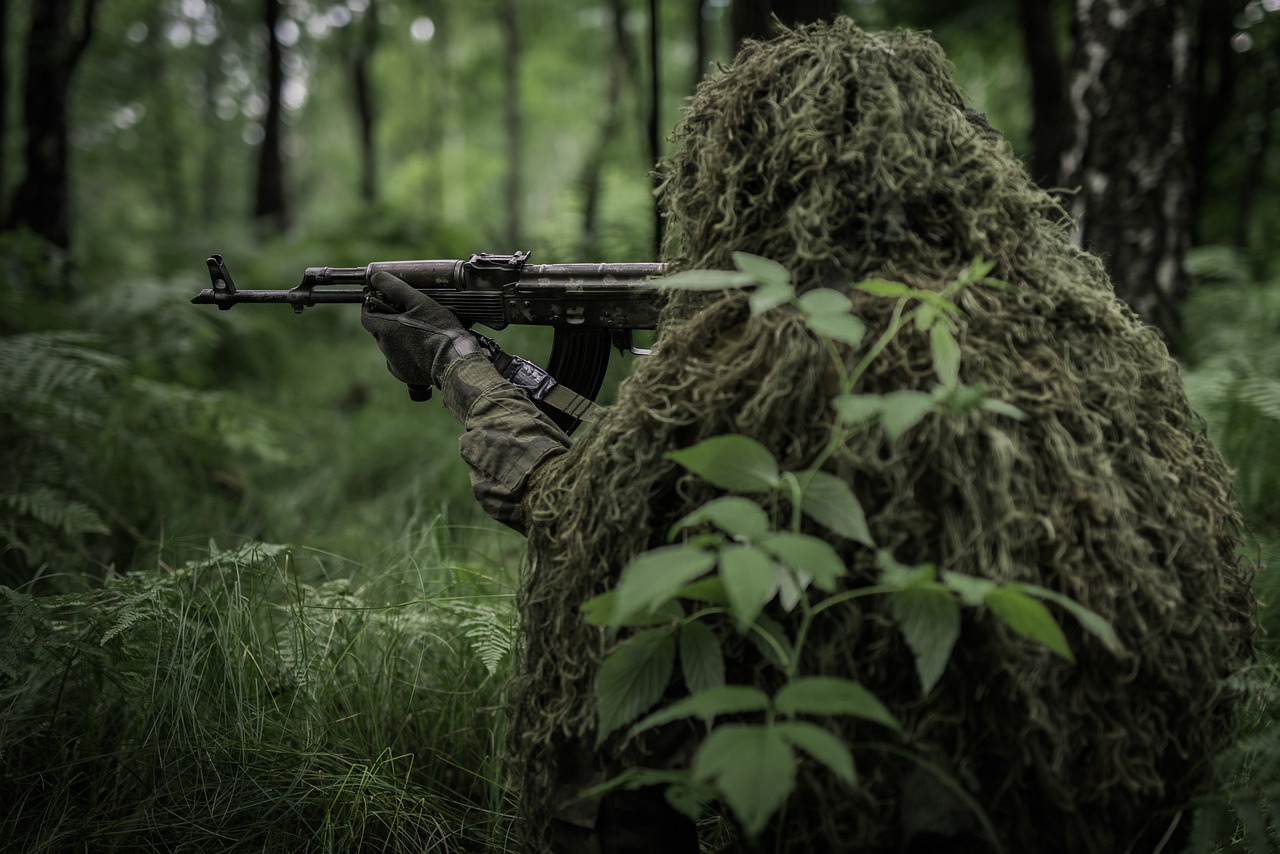
Technological Innovations
In the realm of military robotics, have paved the way for groundbreaking applications in humanitarian aid. Imagine a world where robots can navigate through treacherous terrains, deliver medical supplies, and even assist in search and rescue operations—all while being guided by sophisticated algorithms and artificial intelligence. This is not science fiction; it's the reality we are beginning to witness today.
One of the most significant advancements is the integration of artificial intelligence (AI)
Drones are another exciting innovation that has transformed the landscape of humanitarian aid. Equipped with high-resolution cameras and sensors, drones can survey disaster-stricken areas from above, providing invaluable information about the situation on the ground. They can quickly assess damage to infrastructure and identify hotspots where help is urgently needed. In many cases, drones can reach locations that are otherwise inaccessible, acting as the eyes in the sky for rescue teams.
Furthermore, remote sensing technologies have enhanced the capabilities of military robots. These technologies allow robots to gather data about their surroundings without being physically present, which is particularly beneficial in hazardous environments. For example, robots equipped with thermal imaging can detect heat signatures, making it easier to locate individuals trapped in collapsed buildings during a disaster.
To illustrate the impact of these technological innovations, consider the following table that summarizes some key advancements:
| Technology | Application | Benefits |
|---|---|---|
| Artificial Intelligence | Decision-making and data analysis | Real-time adaptability and efficiency |
| Drones | Aerial surveillance and assessment | Access to hard-to-reach areas |
| Remote Sensing | Data gathering without physical presence | Safety in hazardous environments |
In conclusion, the integration of these cutting-edge technologies into military robotics is not just about enhancing military capabilities; it's about leveraging these advancements for the greater good. As we continue to innovate, the potential for military robots to revolutionize humanitarian aid efforts is limitless. The future is bright, and we can only imagine the possibilities that lie ahead.
- What are military robots used for in humanitarian aid? Military robots are used for various purposes, including search and rescue operations, medical supply delivery, and infrastructure assessment during disasters.
- How does AI improve the effectiveness of military robots? AI enhances the decision-making capabilities of robots, allowing them to analyze data and adapt to changing conditions in real-time.
- Can drones operate in disaster zones? Yes, drones can provide aerial surveillance and access areas that may be dangerous or inaccessible for human rescuers.
- What are the ethical concerns regarding military robotics in humanitarian efforts? Ethical concerns include issues of autonomy, accountability, and the potential for misuse of military technology in non-combat situations.
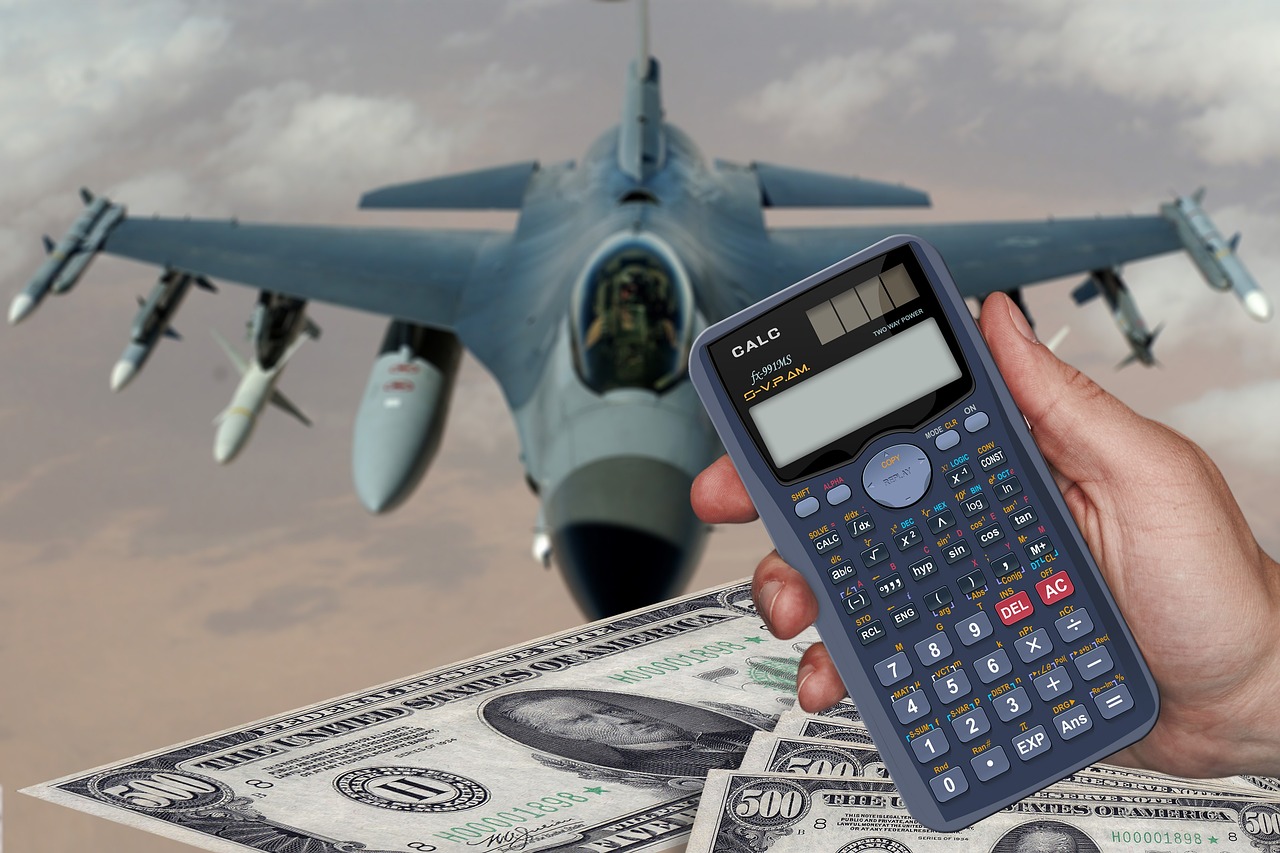
Case Studies
Military robotics have made significant strides in humanitarian aid, and several case studies illustrate their transformative impact in real-world scenarios. One remarkable example is the use of drones in the aftermath of the 2015 Nepal earthquake. When traditional rescue methods were hindered by damaged infrastructure and treacherous terrain, drones equipped with high-resolution cameras were deployed to assess the extent of the destruction. These drones provided critical aerial imagery that enabled rescue teams to identify areas where survivors were trapped, effectively guiding their search and rescue efforts.
Another compelling case occurred during the 2017 hurricanes in the Caribbean, particularly Hurricane Maria. Military robots were utilized to deliver essential supplies to remote islands that were cut off from traditional aid routes. Autonomous ground vehicles were dispatched to transport food, water, and medical kits to communities that had lost access to basic necessities. This not only expedited the delivery of aid but also minimized the risk to human responders in hazardous environments.
In a different context, the use of robotic exoskeletons has been explored in disaster recovery efforts. For instance, in the aftermath of the Fukushima nuclear disaster in Japan, exoskeletons were employed to assist workers in navigating the contaminated zones. These robotic suits enhanced the physical capabilities of the workers, allowing them to lift heavy debris and perform tasks that would have been impossible otherwise. The integration of such technology not only improved efficiency but also reduced the physical strain on human operators.
Moreover, a notable case study can be found in the deployment of bomb disposal robots in conflict zones that have been affected by natural disasters. These robots were crucial during the 2018 Indonesia earthquake and tsunami, where they were used to safely detonate unexploded ordnance that posed a threat to rescue operations. By neutralizing these dangers, military robotics ensured that humanitarian efforts could proceed without the risk of additional casualties.
These examples showcase how military robotics are not just tools of warfare but have evolved into essential assets in humanitarian missions. Their ability to operate in dangerous environments, deliver supplies, and assist in recovery efforts underscores the potential they hold for future disaster response scenarios. As technology continues to advance, we can expect even more innovative applications of military robotics in humanitarian aid, enhancing the efficiency and effectiveness of relief operations worldwide.
- How do military robots differ from traditional rescue methods?
Military robots can operate in hazardous environments where human rescuers may be at risk, providing real-time data and assistance without putting lives in danger. - What types of military robots are used in humanitarian aid?
Various types of military robots are utilized, including drones for aerial surveillance, ground vehicles for supply delivery, and robotic exoskeletons for assisting human operators in physically demanding tasks. - Are there ethical concerns regarding the use of military technology in humanitarian efforts?
Yes, there are ethical dilemmas associated with military technology in humanitarian contexts, including issues of autonomy, accountability, and the potential for misuse. - Can military robots operate in all types of terrains?
While military robots are designed for diverse environments, their effectiveness can be hindered by challenging terrains, weather conditions, and technical limitations.
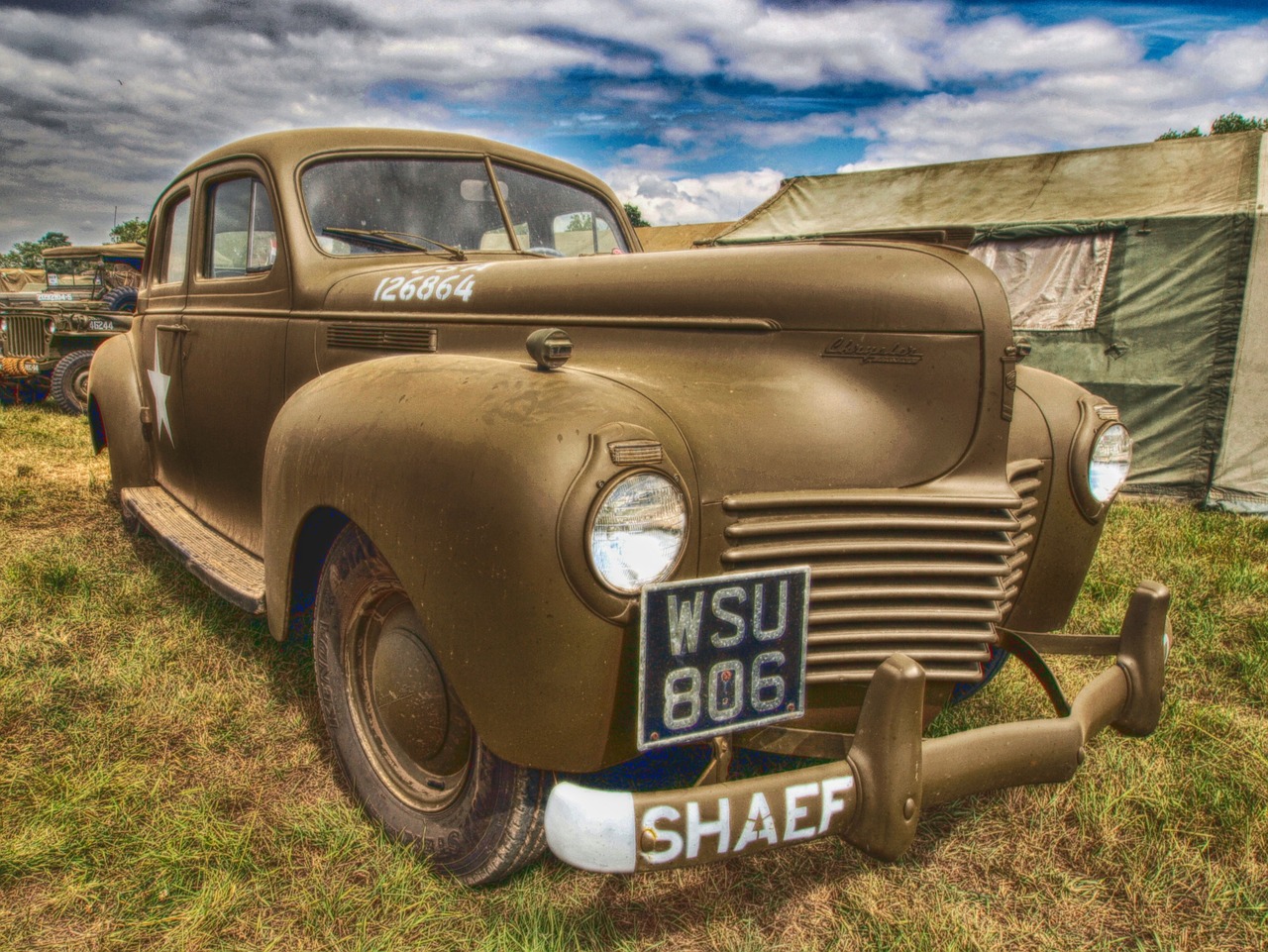
Medical Supply Delivery
In the chaotic aftermath of a disaster, when every second counts, the timely delivery of medical supplies can mean the difference between life and death. This is where military robotics truly shines, stepping in to bridge the gap between need and availability. Imagine a scenario where traditional transportation methods are rendered useless due to debris or impassable roads; military robots, equipped with cutting-edge technology, can navigate these treacherous environments with ease. They are not just machines; they are lifelines, delivering critical supplies like medications, bandages, and even vaccines to those in desperate need.
One of the most remarkable aspects of these robotic systems is their ability to operate autonomously or under remote control, ensuring that they can reach the most inaccessible areas. For instance, during the aftermath of a significant earthquake, these robots can be deployed to deliver essential supplies to hospitals that are overwhelmed or cut off from regular supply routes. The precision and efficiency of military robots in such scenarios are awe-inspiring; they can traverse rough terrains, avoid obstacles, and deliver supplies with pinpoint accuracy.
Moreover, the integration of advanced technologies such as GPS navigation and real-time data analysis further enhances their capabilities. Equipped with sensors, these robots can assess environmental conditions, detect hazards, and make informed decisions about the safest routes to take. This adaptability is crucial in disaster scenarios where conditions can change rapidly, and the ability to reroute supplies in real-time can save lives.
To give you a clearer picture, let’s look at a few examples of how military robots have been successfully utilized for medical supply delivery:
| Case Study | Location | Outcome |
|---|---|---|
| Earthquake Relief | Haiti, 2010 | Delivered critical medical supplies to isolated clinics |
| Flood Response | Texas, 2017 | Transported emergency medical kits to flooded areas |
| COVID-19 Response | Italy, 2020 | Distributed vaccines to remote locations |
These examples illustrate not only the effectiveness of military robotics in delivering medical supplies but also their potential to operate in diverse and challenging environments. As technology continues to advance, we can expect even greater innovations in the capabilities of these robots, making them an indispensable tool in humanitarian aid efforts.
However, while the benefits are clear, the implementation of military robotics for medical supply delivery is not without its challenges. Issues such as the need for robust communication systems, the requirement for trained personnel to operate these robots, and the ethical implications of using military technology in civilian contexts must be carefully considered. As we move forward, it’s essential to strike a balance between leveraging these technologies for good while addressing the concerns that accompany their use.
- How do military robots navigate in disaster zones?
Military robots are equipped with advanced sensors and GPS technology that allow them to map their environment and navigate through obstacles autonomously. - What types of medical supplies can military robots deliver?
They can transport a wide range of medical supplies, including medications, first aid kits, and even diagnostic equipment, depending on their design and capabilities. - Are military robots safe to use in civilian areas?
Yes, when operated correctly, military robots are designed to be safe and efficient in civilian contexts, although operational protocols and ethical guidelines must be followed.

Challenges and Ethical Considerations
As we venture into the promising world of military robotics in humanitarian aid, it's vital to recognize the significant challenges and ethical considerations that accompany this technological leap. While the potential for robots to assist in disaster relief is immense, there are hurdles that must be addressed to ensure these innovations are used effectively and responsibly. One of the primary challenges is the operational limitations faced by these robots. For instance, many military robots are designed for combat scenarios and may struggle in complex, unpredictable environments typical of disaster zones. Factors such as terrain adaptability and the availability of resources can severely hinder their deployment. Imagine a robot designed for open battlefields trying to navigate the rubble of a collapsed building; it’s not just a technical issue, but a logistical nightmare.
Moreover, the ethical dilemmas surrounding military robotics in humanitarian contexts cannot be overlooked. The use of technology initially developed for warfare raises questions about autonomy and accountability. Who is responsible if a robot fails to perform its task, leading to further harm? Additionally, there is a fear that these technologies could be misused, either by being repurposed for military engagements or by unintentionally causing harm in sensitive situations. The very essence of humanitarian aid is to help those in need, but introducing military-grade technology into these scenarios can blur the lines of intention and impact.
Public perception also plays a crucial role in the acceptance of military robotics in humanitarian efforts. While many people may see the benefits, others might view these robots with skepticism, fearing that their presence could lead to militarization of humanitarian aid. This concern is not unfounded; there's a thin line between aid and intervention, and maintaining trust within communities is paramount. To address these concerns, transparency in operations and clear communication about the roles of these robots are essential.
In summary, while military robotics hold great promise for enhancing humanitarian aid, the challenges and ethical considerations they present must be carefully navigated. It’s a balancing act of leveraging technology for good while ensuring that the core values of humanitarian work—compassion, aid, and respect for human dignity—are upheld. As we look to the future, it’s crucial for developers, policymakers, and humanitarian organizations to engage in ongoing dialogues about these issues to foster a responsible and effective integration of military robotics into disaster relief efforts.
- What are the main challenges faced by military robotics in humanitarian aid?
Operational limitations, ethical dilemmas, and public perception are some of the primary challenges.
- How do ethical considerations impact the deployment of military robots?
Ethical concerns include questions of autonomy, accountability, and the potential for misuse in sensitive situations.
- Can military robots effectively navigate disaster zones?
While they have advanced capabilities, many military robots may struggle with the unpredictable terrains typical of disaster areas.
- What role does public perception play in the use of military robotics?
Public perception can significantly influence the acceptance and effectiveness of military robotics in humanitarian efforts.

Operational Limitations
While the integration of military robotics into humanitarian aid is undeniably revolutionary, it's essential to recognize the that can hinder their effectiveness. Imagine a superhero with extraordinary powers, but who is still bound by certain constraints. Similarly, military robots, despite their advanced technology, face various challenges that can impact their deployment in disaster-stricken areas.
One of the primary limitations is terrain adaptability. Disasters often strike in unpredictable environments, such as earthquake-ravaged cities or flood-affected regions. These areas can present treacherous landscapes filled with debris, unstable structures, and hazardous materials. Military robots, while designed for rugged conditions, may struggle to navigate these complex terrains. For instance, a drone may excel in aerial surveillance but could be rendered useless in a densely packed urban environment where buildings block its path.
Additionally, the resource availability plays a crucial role in the operational effectiveness of military robots. These machines often require specific types of fuel, maintenance, and technical support that may not be readily available in remote or disaster-hit locations. Imagine trying to fuel a race car in the middle of a desert with no gas station in sight; the same principle applies here. Without adequate resources, even the most advanced robots can become stranded, unable to fulfill their humanitarian roles.
Moreover, the weather conditions can significantly affect the performance of military robotics. Extreme weather, such as heavy rain, snow, or high winds, can interfere with the functionality of both ground and aerial robots. For example, a drone designed for aerial reconnaissance may be unable to fly in high winds, limiting its ability to assess damage or locate victims. Similarly, ground robots might face difficulties traversing muddy or flooded areas, which can impede their rescue missions.
Another critical aspect to consider is the communication infrastructure. Many military robots rely on real-time data transmission to operate effectively. However, in the aftermath of a disaster, communication networks can be severely disrupted. This disruption can lead to delays in information sharing, making it challenging for robots to receive commands or send data back to their operators. Think of it like trying to have a conversation in a crowded room; the noise and chaos can make it nearly impossible to communicate effectively.
Lastly, there are also concerns regarding human-robot interaction. In high-stress environments, the collaboration between human operators and robots is crucial for successful missions. However, if operators lack the necessary training to manage these advanced technologies, it can lead to inefficiencies and mistakes during critical operations. This situation can be likened to a pilot trying to fly a complex aircraft without adequate training; the results could be disastrous.
In summary, while military robots hold immense potential for enhancing humanitarian efforts, their operational limitations must be addressed to maximize their effectiveness. By acknowledging these challenges, stakeholders can work towards developing solutions that enable these machines to better serve in times of crisis.
- What are the main challenges faced by military robots in humanitarian aid?
Military robots face challenges such as terrain adaptability, resource availability, weather conditions, communication infrastructure, and human-robot interaction. - How can terrain affect the deployment of military robots?
Disasters often create unpredictable and hazardous terrains, which can hinder the navigation and functionality of military robots. - What role does weather play in the performance of military robots?
Extreme weather conditions can impair the operations of both aerial and ground robots, limiting their ability to perform rescue and assessment tasks. - Why is communication infrastructure important for military robotics?
Many military robots rely on real-time data transmission for effective operation, and disrupted communication networks can hinder their functionality. - How can human-robot interaction impact rescue missions?
Effective collaboration between operators and robots is crucial; lack of training can lead to inefficiencies and errors during critical operations.
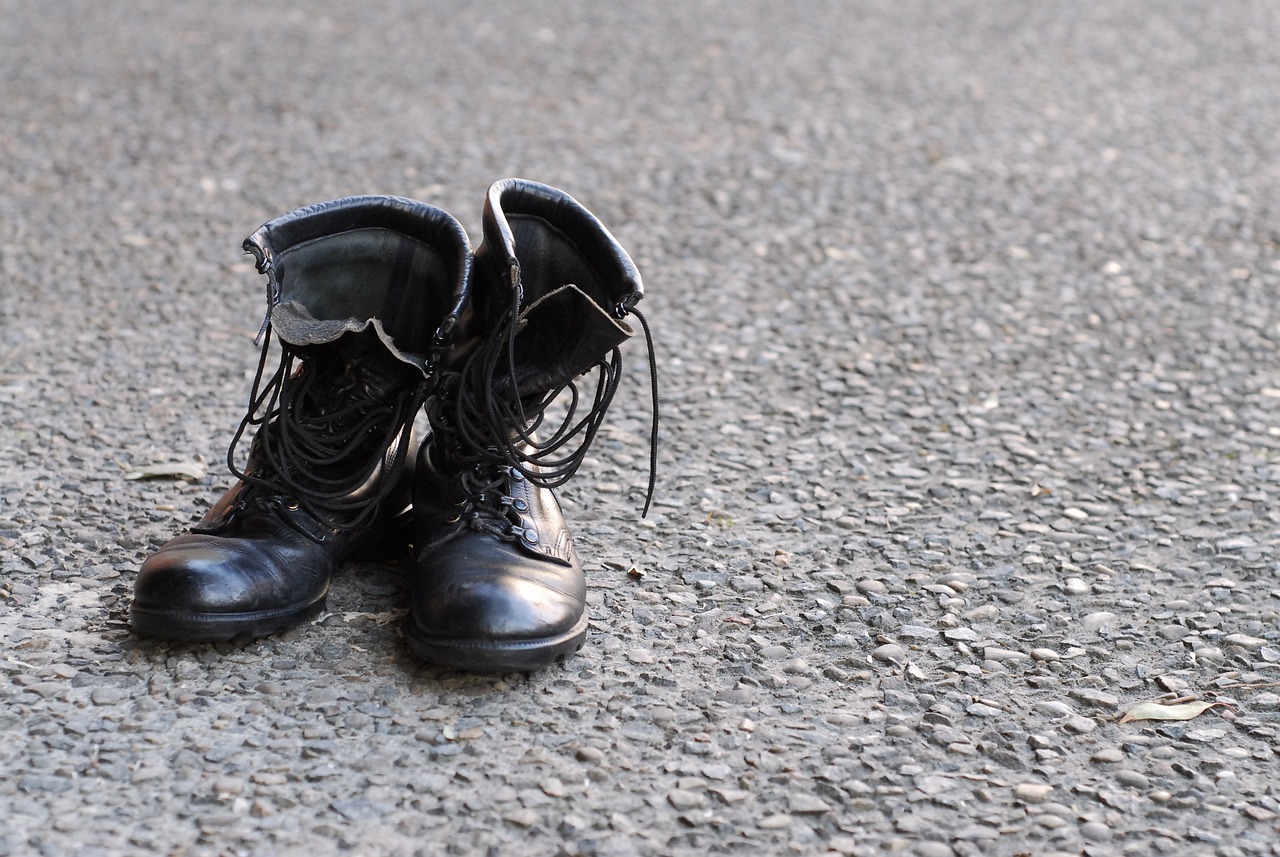
Ethical Dilemmas
As we delve deeper into the realm of military robotics in humanitarian aid, we inevitably encounter a myriad of that challenge our moral compass. The intersection of military technology and humanitarian efforts raises significant questions about the implications of deploying robots designed for combat in scenarios meant for relief and assistance. One of the most pressing concerns is the issue of autonomy. When robots are equipped with decision-making capabilities, who is accountable for their actions? If a robot makes a mistake, such as misidentifying a target or failing to assist a victim effectively, can we hold the creators or operators responsible? This dilemma becomes even more complex when considering the potential for misuse of these technologies in non-humanitarian contexts.
Moreover, the use of military robotics in humanitarian efforts can lead to a desensitization to violence and suffering. When robots are deployed to perform tasks traditionally handled by humans, there is a risk that we may become less empathetic towards those in need. The presence of machines in sensitive environments could alter the public perception of humanitarian missions, leading to a belief that technology can replace human compassion. This shift in perspective raises fundamental questions about the essence of humanitarian work: Is it merely about delivering aid, or is it also about fostering human connection and understanding?
Another critical ethical concern revolves around data privacy and surveillance. Many military robots are equipped with advanced sensing and monitoring technologies, capable of gathering vast amounts of data during their operations. While this data can be invaluable for assessing disaster situations, it also poses risks related to privacy and consent. How do we ensure that the information collected by these robots is used ethically and does not infringe on the rights of individuals? The potential for surveillance and monitoring can create a chilling effect, where individuals may feel their privacy is compromised, leading to mistrust in humanitarian organizations.
In addition to these concerns, the resource allocation for military robotics in humanitarian aid raises ethical questions. Should we invest heavily in robotic technology when there are pressing needs for basic humanitarian resources such as food, water, and shelter? This debate often leads to a broader discussion about the priorities in humanitarian aid and whether we are placing too much faith in technology to solve complex human problems. The answer to this question is not straightforward, as it involves weighing the benefits of technological advancements against the immediate needs of vulnerable populations.
In conclusion, while military robotics hold the promise of enhancing the effectiveness of humanitarian aid, it is crucial to navigate the ethical dilemmas they present with care. As we embrace these innovations, we must remain vigilant in addressing the moral implications of their use, ensuring that our pursuit of technological advancement does not overshadow the fundamental principles of compassion and humanity that drive humanitarian efforts.
- What are the main ethical concerns regarding military robotics in humanitarian aid?
The primary concerns include autonomy and accountability, desensitization to violence, data privacy, and resource allocation. - How can we ensure accountability for robotic actions in humanitarian missions?
Establishing clear guidelines and regulations for the deployment and operation of military robots can help to ensure accountability. - Are there any successful examples of military robotics being used ethically in humanitarian efforts?
Yes, there have been instances where military robots have effectively assisted in disaster relief without ethical breaches, but these cases often involve careful planning and oversight.
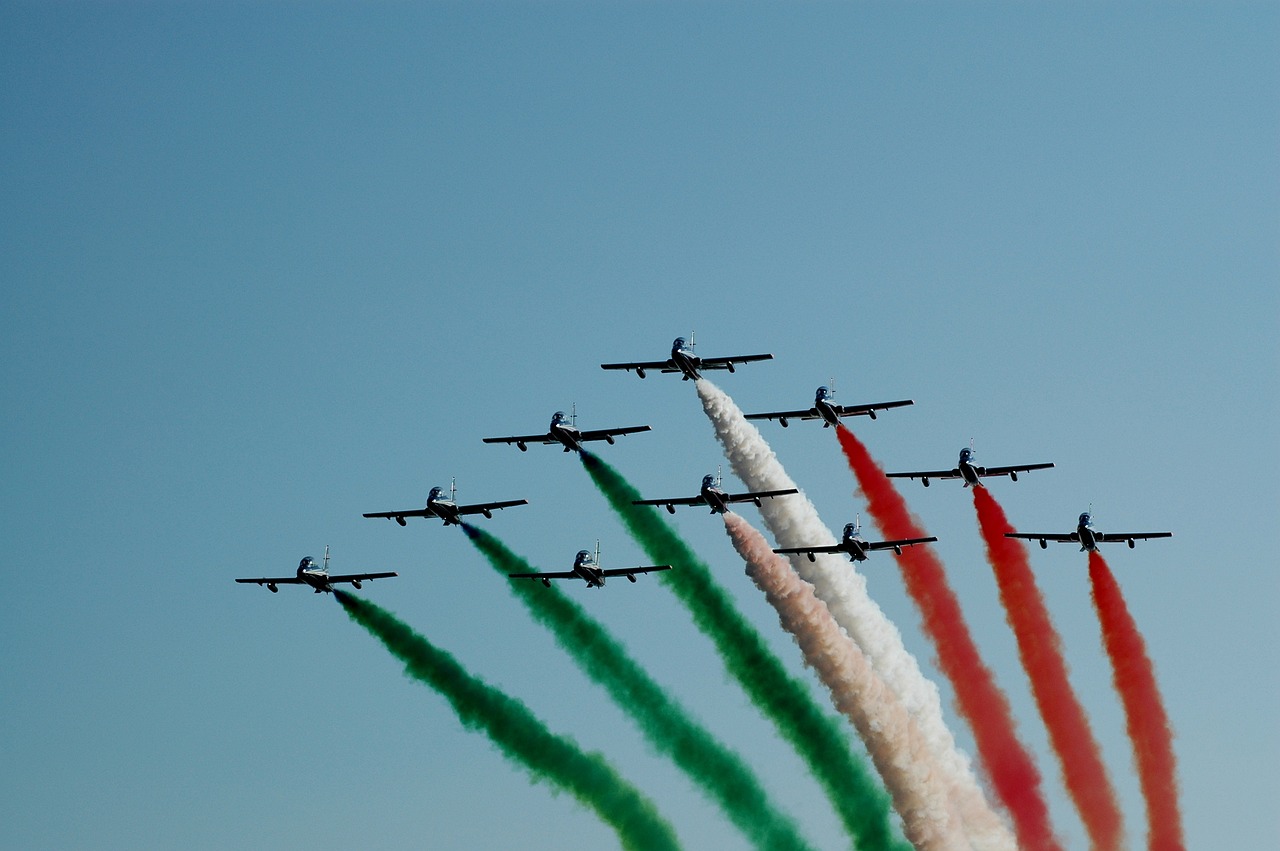
The Future of Military Robotics in Humanitarian Aid
As we gaze into the horizon of technological advancements, the future of military robotics in humanitarian aid appears not only promising but also transformative. Imagine a world where robots are not just tools of war but are pivotal in saving lives and restoring hope in disaster-stricken areas. The potential applications of these machines are expanding rapidly, fueled by innovations in artificial intelligence, machine learning, and robotics engineering.
One of the most exciting prospects lies in the development of autonomous systems that can operate in environments that are too dangerous for humans. Picture a scenario where a disaster zone is filled with debris and hazardous materials. Here, robots equipped with advanced sensors and AI can autonomously navigate through the wreckage, identifying survivors and delivering crucial supplies without putting human lives at risk. This capability could significantly enhance the speed and efficiency of disaster response efforts, allowing for quicker recovery times.
Moreover, the integration of drones into humanitarian missions is set to revolutionize how aid is delivered. Drones can cover vast areas in a fraction of the time it takes for ground teams, scouting for survivors or assessing damage from the air. In the future, we might see fleets of drones working in tandem, relaying information back to command centers in real-time, ensuring that resources are allocated where they are most needed. The combination of aerial and ground robotics will create a multi-layered approach to disaster response that is both dynamic and effective.
However, as we embrace these advancements, we must also consider the implications of their use. The future of military robotics in humanitarian aid will inevitably raise questions about ethics and accountability. For instance, who is responsible if a robot makes a mistake? As we integrate these technologies, establishing clear guidelines and frameworks will be crucial to address such dilemmas. Furthermore, public perception will play a significant role in the acceptance of military robotics in humanitarian contexts. Transparency in their deployment and operations will help build trust within communities affected by disasters.
In looking forward, we can anticipate a future where military robotics not only enhance the efficiency of humanitarian efforts but also pave the way for new methods of collaboration between military and civilian organizations. This partnership could lead to the development of a shared knowledge base, where both sectors learn from each other's experiences and expertise. Such collaboration is essential for creating a robust framework that leverages the strengths of military technology in a way that prioritizes humanitarian values.
To summarize, the future of military robotics in humanitarian aid is bright, filled with opportunities that can significantly impact disaster response and recovery. As technology continues to evolve, so too will our ability to respond to crises with unprecedented speed and effectiveness. However, it is imperative that we approach this future with caution, ensuring that ethical considerations remain at the forefront of our innovations.
- What are the main benefits of using military robotics in humanitarian aid?
Military robotics can enhance efficiency, speed up response times, and operate in hazardous environments, providing essential support in disaster relief efforts. - How do drones contribute to humanitarian missions?
Drones can quickly survey disaster zones, assess damage, and deliver supplies to inaccessible areas, making them invaluable tools in emergency situations. - What ethical concerns are associated with military robotics?
Concerns include accountability for mistakes made by autonomous systems, the potential for misuse of technology, and the need for transparency in operations.
Frequently Asked Questions
-
What are military robots used for in humanitarian aid?
Military robots are increasingly being utilized in humanitarian aid for a variety of purposes. They assist in search and rescue operations, deliver medical supplies to hard-to-reach areas, and assess damaged infrastructure. Their ability to operate in hazardous environments makes them invaluable during disasters.
-
How do military robots enhance search and rescue operations?
These robots are equipped with advanced technologies such as AI, drones, and remote sensing capabilities, which allow them to locate and assist victims more efficiently than human responders alone. They can navigate through rubble and hazardous conditions, providing real-time data that is critical for rescue teams.
-
What challenges do military robots face in humanitarian missions?
Military robots encounter several challenges, including terrain adaptability and resource availability. They must be able to function in various environments, which can be difficult due to technical limitations. Additionally, the logistics of deploying these robots in remote areas can complicate their effectiveness.
-
Are there ethical concerns regarding the use of military robotics in humanitarian efforts?
Yes, there are significant ethical dilemmas surrounding the use of military technology in humanitarian contexts. Issues such as autonomy and accountability arise, especially when robots make decisions without human intervention. The potential for misuse of these technologies also raises important questions about their deployment in sensitive situations.
-
What is the potential future of military robotics in humanitarian aid?
The future looks promising, with advancements in technology likely to enhance the capabilities of military robots even further. As these technologies evolve, we can expect them to play an even larger role in humanitarian aid, transforming how we respond to disasters and deliver assistance to those in need.






